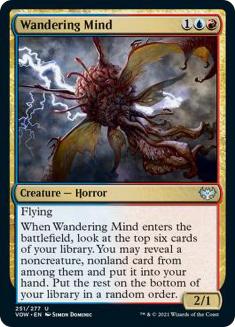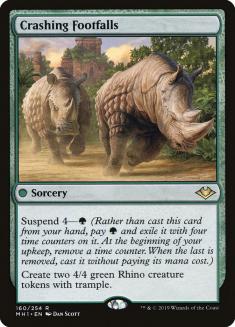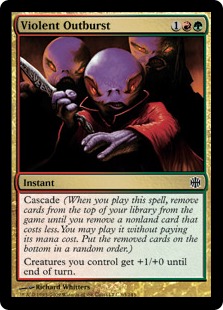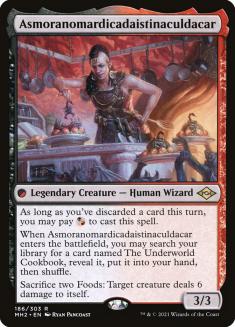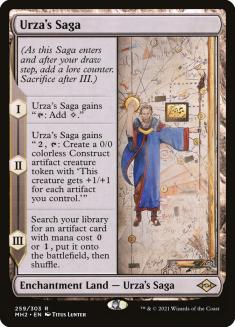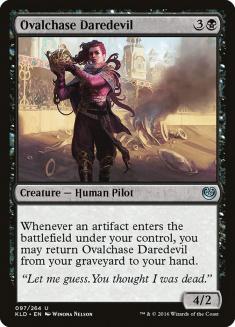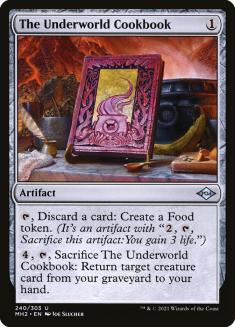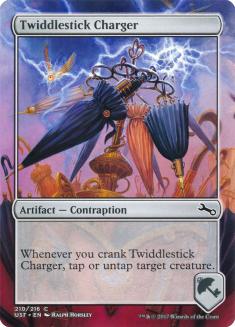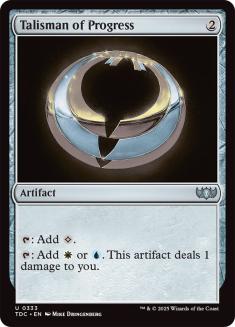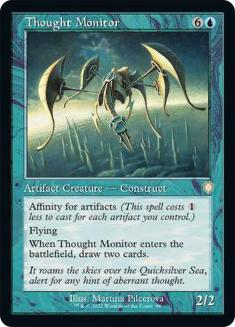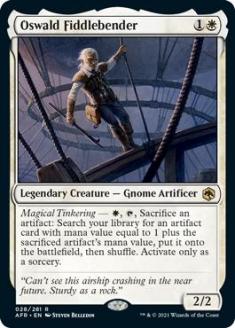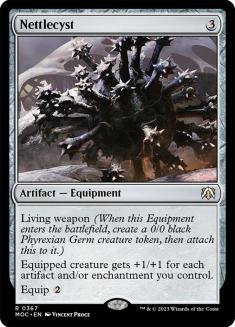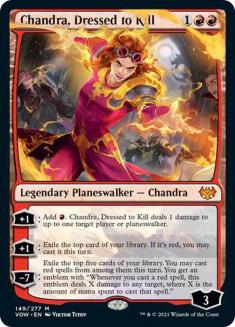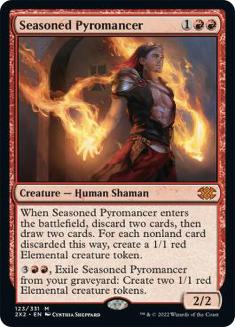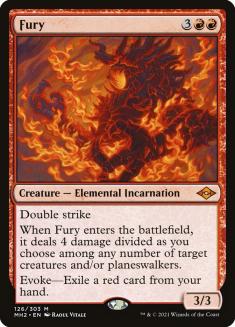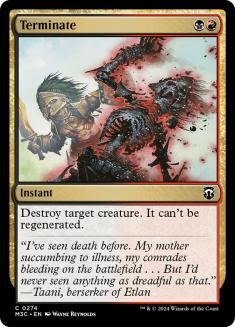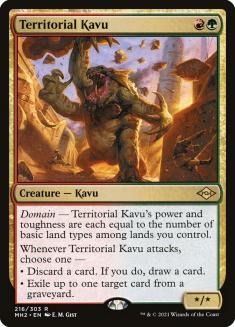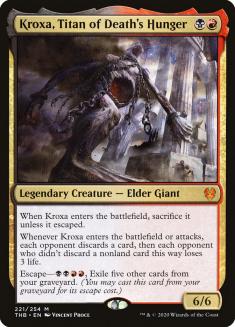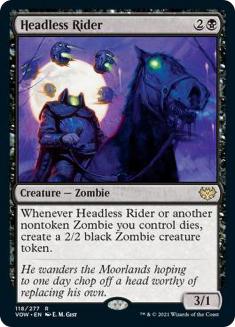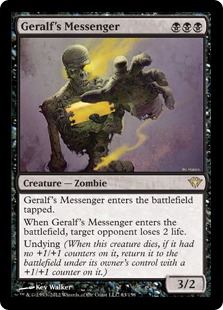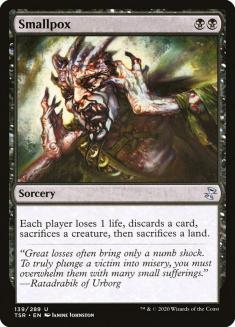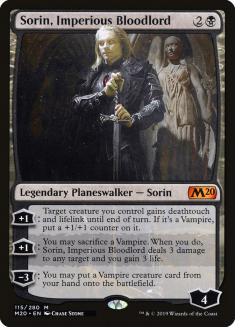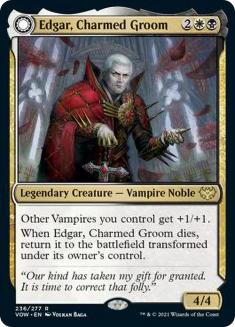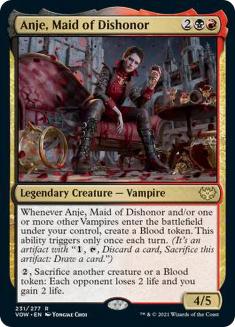The short turnaround between Innistrad: Midnight Hunt and Innistrad: Crimson Vow has always been a bit shocking, but it’s really obvious now that Innistrad: Crimson Vow has hit the digital play tables.
There isn’t any obvious door-buster in Modern the way Innistrad: Midnight Hunt kicked off with a Faithful Mending showcase, but a few cards are making the set’s presence known in the format. Between Challenges, Leagues, and streams, these are the Innistrad: Crimson Vow cards first out of the gate into the Modern metagame.
1. Wandering Mind
Creatures (16)
- 3 Eternal Witness
- 1 Meddling Mage
- 1 Knight of Autumn
- 4 Omnath, Locus of Creation
- 4 Solitude
- 1 Endurance
- 1 Fury
- 1 Wandering Mind
Planeswalkers (7)
Lands (28)
Spells (29)

Let’s start with a minor upgrade in a near-miss of a finish. Wandering Mind was floated around as a role-player in the Ephemerate decks in the format. It finds you the Ephemerate or planeswalker or Time Warp you need. Then it helps you leverage Ephemerate in an self-contained build a Mulldrifter but better fashion.
After seeing it in action, I agree with cftsoc3’s light application of the card. I can’t imagine wanting to draw multiples, but the first copy is pretty good. In terms of ways to leverage an Ephemerate for card advantage I can’t think of many better ones unless you already have the thing you need for Eternal Witness. Pairing the card with Eladamari’s Call means you have virtual access to a bunch of it for when you want it to fill the Ephemerate target gap or when you just want to cash in Call for value, but also means you won’t ever have the multiple Wandering Mind clunkfest hands.
I think there’s also an argument for a copy or two of Wandering Mind in Temur Crashcade decks, especially in the Four-Color Crashcade (Yorion) variant popularized by d00mwake recently. Being clunky and lower-impact is a bit antithetical to the rest of the deck, but when you need to assemble a bigger setup or just find a cascader (especially with Ardent Plea in your deck), the card helps a lot at relatively low cost.
Wandering Mind isn’t going to revolutionize Modern, but it’s one of the best value creatures we have access to.
2. Blood Fountain
Creatures (20)
- 4 Ovalchase Daredevil
- 4 Urza, Lord High Artificer
- 4 Emry, Lurker of the Loch
- 4 Asmoranomardicadaistinaculdacar
- 4 Thought Monitor
Lands (22)
Spells (19)

Blood Fountain was rated the top Innistrad: Crimson Vow card for Modern by my colleagues, and the immediate target for many streamers to brew with. I had much lower expectations.
To quote myself from Dominaria’s Judgment last week, why are we playing this card instead of The Underworld Cookbook?
I think I’ve answered my own questions snooping around streams this week. Or maybe I’ve learned more about Urza’s Saga than I have Blood Fountain.
Maybe I should have learned this in the early Asmoranomardicadaistinaculdacar days of the format, but it was hard then. The format wasn’t refined, people didn’t really get the big picture, and Urza’s Saga just beat people up because they were operating on 2019 Modern principles.
That said, I think it’s time to step back and actually try to understand more about Urza’s Saga in Modern. It absolutely is one of the best cards in the format, but its power has weird margins that people have overlooked.
Ever notice how you don’t really see Urza’s Saga in Modern without Lurrus of the Dream-Den around these days?
I guess there’s an Affinity deck or two floating around the winners brackets occassionally, but the vast majority of successful Urza’s Saga decks over the last few months are Lurrus decks. Whether it’s with Wrenn and Six and Thoughtseize or Colossus Hammer and Sigarda’s Aid, Urza’s Saga is working in a low-drop exclusive environment.
The reason is really simple: having expensive cards in your deck does not play well with sacrificing lands and locking up entire turns’ worth of mana to make Constructs. Tapping Urza’s Saga for mana is a waste, and if you are slamming something like Urza, Lord High Artificer and then untapping to start making Constructs…. was that necessary? Really, Urza’s Saga is only in these decks as a weirdly anti-synergistic synergy-dependent backup plan. It’s supposed to help you when people interact with you, but only does that when they try to take it to the one-for-one battle and not against any backbreaking stuff like Force of Vigor.
The easiest pitfall here might be the land-spell bind of Urza’s Saga. If you’re counting Urza’s Saga as a land, it’s unreliable and colorless and you can’t cast your spells. If you count it as a spell, it isn’t a rapidly deployable artifact that enables your Thought Monitor-style counting synergies. Just bad times all around.
But when your deck is efficient, and especially when you have Springleaf Drum or Ragavan, Nimble Pilferer to spam some modularly costed plays, Urza’s Saga is a forced action from your opponent. The winning gameplan out of Orzhov Hammer (Lurrus) in the face of hate is often extending Urza’s Saga, forcing their answers, and then firing off the combo kill against an opponent who has been run down on resources; even if you lose lands, it doesn’t take a lot to deploy your threats.
This really isn’t an indictment of Blood Fountain, since the card can play with Lurrus where access to a Raise Dead is a massive upgrade to Lurrus long games, but more an indictment of the things people built this week. As weird as it sounds, your classic Whirza strategy should probably drop the Urza’s Sagas.
The other natural pitfall for Blood Fountain is seeing Blood tokens and immediately thinking Asmor. It’s cool that a rummage is an enabler to cast Asmor, but that’s about all the value it has in that deck.
How many cards in those decks are even good to draw? Your gameplans are rarely about the things you’re casting; it’s all about whatever goober-to-action engine you assemble. Why would you take an action to spend a goober to maybe upgrade a card? Why not just keep the goober, turn that card that probably doesn’t have real game text into another goober, and crank your goober contraptions ?Hell, even getting the free pitch of Ovalchase Daredevil doesn’t really matter for the Asmor decks.
You want Blood Fountain in a deck that actually cares about the cards in its hand, because otherwise using that Blood token to convert one card in hand into another card doesn’t matter.
I’m also not super-into Blood Fountain only for affinity purposes. There’s the primary issue of it placing additional demands on your lands to produce colors of mana, but there’s also the secondary issue that a Talisman that taps for a mana is the same mana return on your card but is somehow better at double-spelling because it makes blue mana, not “colorless” affinity mana.
With all that in mind, the place I want to explore Blood Fountain is in the Azorius Urza shell with Oswald Fiddlebender and Stoneforge Mystic for Nettlecyst, probably in a Yorion, Sky Nomad shell. Blood Fountain offering multiple mana values to Fiddlebend and acting as a Flicker-reward and recusion element for Yorion feels like you’re really leveraging your cards.
Creatures (21)
- 1 Tidehollow Sculler
- 4 Stoneforge Mystic
- 2 Thraben Inspector
- 4 Urza, Lord High Artificer
- 1 Esper Sentinel
- 1 Thought Monitor
- 4 Oswald Fiddlebender
- 4 Ingenious Smith
Planeswalkers (2)
Lands (30)
Spells (27)

This feels like a suspiciously low amount of black cards, but I’m using some 80-card deck logic and letting myself get away with whatever fun-of additions I want.
I’m also aware this violates the prior principle of Urza’s Saga not meshing well with expensive cards. Again I’ll cite 80-card shenanigans making having more independent threats a bigger deal, but you may want some Talisman of Progress to up that mana count.
Blood Fountain is a solid enabler, but there’s still the hurdle of resolving the issues of the shells it belongs in. It doesn’t do that work, but it’s possible the tools to build a good artifact deck already existed and just needed someone to put together the puzzle pieces.
3. Chandra, Dressed to Kill
Creatures (20)
Planeswalkers (4)
Lands (22)
Spells (14)

I don’t have a ton of complicated thoughts about Chandra, Dressed to Kill. The card is really restrictive, since you basically need to only have red cards to make the reveal a card ability good, and it’s inherently exclusive with Lurrus of the Dream-Den. It doesn’t self-protect against attackers and gets one-shot by a Fury trigger the turn after it resolves, and competes directly with Seasoned Pyromancer for the slot of three-drop that’s supposed to punish controlling decks.
But with all that out of the way, the card looked good.
I don’t think you want to play Chandra over Seasoned Pyromancer, but that also doesn’t mean four is where you stop on that effect. Once you buy into the red midrange plan, I doubt four great three-drops is where you want to stop. And as we have seen from the various Crashcade decks these days, Bonecrusher Giant is no longer a great red three-drop.
There’s also a lot of direct correlation between Chandra, Dressed to Kill and how good Fury is. Hard-casting Fury is better than hard-casting any of the other Incarnations by a fairly large margin because Fury just kills opponents. Chandra’s mana ability making that easier is pretty important when every other red card points towards lower land counts and surveiling or rummaging away lands to find spells. Obosh, the Preypiercer is just the sprinkles on the ice cream cone here.
I don’t think you want to play four Chandras in the Mono-Red Midrange (Obosh) deck, but more than zero seems absolutely correct. To run down the list of concerns I led with, you’re already baiting Fury with your other cards, the red deck is good at managing the early attackers that might pressure Chandra, you absolutely want more Seasoned Pyromancer, and you have a non-Lurrus companion. All the problems are solved.
My follow up question though: Do you need to be Mono-Red? You want every spell in your deck to be red, but they can also include other colors if you move Blood Moon to the sideboard. Rakdos is the obvious direction for Terminate and Kroxa, Titan of Death’s Hunger. You could even get really funky and play Five-Color Red with Territorial Kavu as your hard-hitting early-drop. All these cards conflict with Obosh, the Preypiercer, but you can just choose to keep things un-even with a splash.
Chandra, Dressed to Kill isn’t a pressing reason to re-examine Mono-Red Midrange in Modern, but it’s another building block towards the deck having a resurgence to the top tiers of the format.
4. Ancestral Anger
Overturf, King of Prowess has spoken.
5. Headless Rider
In a little sneak peek of this week’s upcoming Dominaria’s Judgment, I’m a pretty big fan of Headless Rider as a Modern Zombies payoff. A lot of the existing power in Zombies comes on the back of death triggers from Undead Augur and fueling them with Gravecrawler plus Carrion Feeder, and Headless Rider layers on top of those same synergies while maintaining the removal resilience of the rest of the Zombies shell.
But again, I think there’s a failure in deckbuilding occurring. I’m not even going to share an existing decklist, because all the ones I’ve seen fall into the same trap.
Stop playing Geralf’s Messenger. More three-drops are not the answer. Golgari Yawgmoth is literally cutting the card, and it’s a full-blown combo piece there.
Build your Zombies decks to be efficient. You want to be in a similar position to the Orzhov Hammer decks, where every turn you produce some relevant cheap play that also threatens to go full-blown engine if unopposed. You don’t want to look at a hand of Turn 3 plays and die horribly to an Omnath, Locus of Creation or really any other good Modern deck.
6. Edgar, Charmed Groom
Creatures (11)
Planeswalkers (8)
Lands (24)
Spells (18)
Sideboard

Finally, we have Orzhov Vampire-Pox, with a list just waiting to be posted after a fairly impressive AspiringSpike 5-0.
A lot of this is probably Smallpox just being a great card in Modern, and we are finally seeing decks that play 56 other good cards with it instead of the usual Orzhov mediums.
Sorin, Imperious Bloodlord is clearly a broken card. You can check the mythic rarity symbol and 2019 print date and figure that out. But the most powerful mode on the card is probably the -3 Vampire Show and Tell and there were limited options for that in Modern. Without that, the card was left playing as some weird pump spell reliant on your Silversmote Ghouls and Bloodghasts, something that could be really hampered by graveyard interaction and not really a standalone self-protecting threat.
In the absence of some dominating eight-drop Vampire, you really wanted something that was castable but also good to cheat onto the battlefield. Five mana for Champion of Dusk is a bit excessive for the Modern range, which basically left Kalitas, Traitor of Ghet at four mana. Edgar, Charmed Groom fits right in that four-drop spot, and if they kill it to get through to Sorin, that’s a fine exchange for you. It’s even a threat you can cast that doesn’t dead your Smallpoxes.
That said, if you want to deviate from Smallpox, I think you can make similar arguments for Anje, Maid of Dishonor. This might require even more good Vampires in Modern so you have reasons to make a full-on creature deck out of the tribe, but Anje is a lot of stats and material and range for the cost. Florian, Voldaren Scion feels like another good reason to pursue a more midrange line here, but there just isn’t anything under it and Anje that plays real Magic. Bloodghast isn’t going to stop a Turn 1 Ragavan, Nimble Pilferer (but it gets binned to the Smallpox that does), and ideally your low-end Vampire in a creature deck would.
Edgar, Charmed Groom might just be the exemplar card from Innistrad: Crimson Vow for Modern. It doesn’t feel like a big deal, but the rate is just good enough for it to slide into a core of existing powerful cards and let it get rid of the last clunkers floating around. As a Modern player, seeing playable cards hit decks from new sets without 2019 levels of format-warping power is about the best I could ask for.


